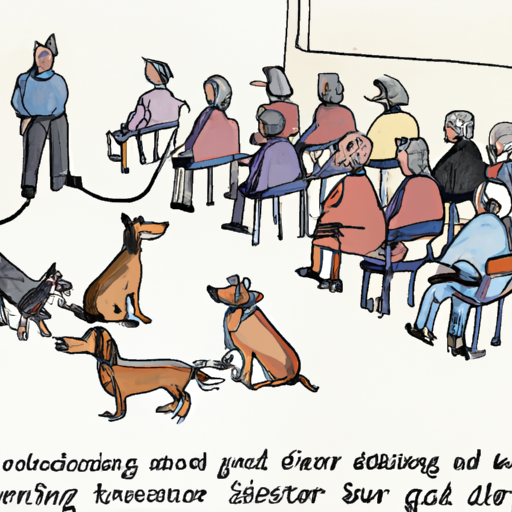Understanding Why Dogs Mark Their Territory
Firstly, it’s crucial that you understand the reasons behind this behavior. It’s a natural instinct for dogs, especially males, to mark their territory. This instinct can be traced back to their wild ancestors, who used scent marking to communicate with other dogs and establish their territory. Dogs mark their territory by urinating on certain spots, usually vertical surfaces.
- Communication: Dogs use urine marking to communicate with other dogs. The scent contains information about the dog’s sex, reproductive status, and more.
- Territoriality: Dogs mark their territory to establish boundaries and ward off other dogs.
- Anxiety: Anxiety and stress can lead to excessive marking. Changes in the environment, like moving to a new home, can trigger this behavior.
- Medical Issues: Sometimes, excessive marking can be a sign of an underlying medical issue. If your dog’s marking behavior seems excessive or sudden, it’s a good idea to consult with your vet.
Training Your Dog Not to Mark
Training your dog to stop marking can be a challenging task, but with patience and consistency, it’s definitely achievable. Here are some steps you can take:
- Catch them in the act: Keep a close eye on your dog and interrupt them when you see them about to mark. Use a firm “No!” to discourage the behavior.
- Establish your leadership: Dogs are more likely to mark if they feel the need to establish dominance. By establishing your role as the leader, you can help reduce this need.
- Neuter or spay your dog: Neutering or spaying can significantly reduce marking behavior, especially if done at an early age.
Cleaning Marked Areas Thoroughly
Cleaning marked areas thoroughly is crucial in discouraging repeated marking. Dogs have a keen sense of smell and can detect urine marks even if they’ve been cleaned with standard household cleaners.
| Cleaning Agent | Effectiveness |
|---|---|
| Vinegar and Water | Effective for fresh marks |
| Enzyme-based Cleaners | Best for eliminating odor completely |
Addressing Underlying Medical Issues
As mentioned earlier, excessive marking can sometimes be a sign of an underlying medical issue. If you’ve tried training and thorough cleaning and your dog is still marking excessively, it could be time to consult with a vet. Conditions such as urinary tract infections, kidney disease, and diabetes can trigger excessive marking.
Using Products to Help Prevent Marking
There are a variety of products on the market designed to help prevent dogs from marking. These include:
- Deterrent sprays: These sprays can be applied to areas that your dog frequently marks. The smell discourages your dog from urinating there.
- Dog diapers: Dog diapers can prevent urine from marking surfaces, making them a good option for indoor dogs.
Frequently Asked Questions
Q: What age do dogs start marking?
A: Male dogs usually start marking when they reach sexual maturity, around six months to a year old.
Q: Can female dogs also mark their territory?
A: Yes, while it’s more common in males, female dogs can also mark, especially if they’re in heat.
Q: How can I tell the difference between marking and a urinary tract infection?
A: Marking usually involves small amounts of urine on vertical surfaces. If your dog is urinating large amounts, having accidents in the house, or showing signs of discomfort, it may be a urinary tract infection. Always consult with a vet if you’re unsure.



